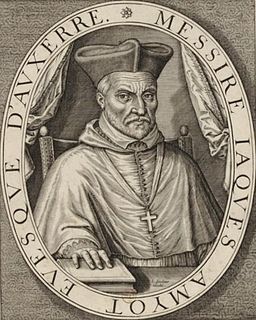 W
WJacques Amyot, French Renaissance writer and translator, was born of poor parents, at Melun.
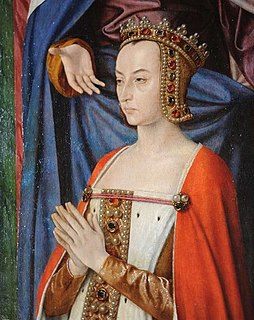 W
WAnne of France was a French princess and regent, the eldest daughter of Louis XI by Charlotte of Savoy. Anne was the sister of Charles VIII, for whom she acted as regent during his minority from 1483 until 1491. During the regency she was one of the most powerful women of late fifteenth-century Europe, and was referred to as "Madame la Grande". Between 1503 and 1521, she also acted as de facto regent of the Duchy of Bourbon during the reign of her daughter Suzanne, Duchess of Bourbon.
 W
WFrançois Baudouin, also called Balduinus, was a French jurist, Christian controversialist and historian. Among the most colourful of the noted French humanists, he was respected by his contemporaries as a statesman and jurist, even as they frowned upon his perceived inconstancy in matters of faith: he was noted as a Calvinist who converted to Catholicism.
 W
WFrançois de Belleforest was a prolific French author, poet and translator of the Renaissance.
 W
WPierre Belon (1517–1564) was a French traveler, naturalist, writer and diplomat. Like many others of the Renaissance period, he studied and wrote on a range of topics including ichthyology, ornithology, botany, comparative anatomy, architecture and Egyptology. He is sometimes known as Pierre Belon du Mans, or, in the Latin in which his works appeared, as Petrus Bellonius Cenomanus. Ivan Pavlov called him the "prophet of comparative anatomy".
 W
WJacques Besson was a French Protestant inventor, mathematician, and philosopher, chiefly remembered for his popular treatise on machines Theatrum Instrumentorum (1571–72), which saw many reprints in different languages.
 W
WTheodore Beza was a French Reformed Protestant theologian, reformer and scholar who played an important role in the Reformation. He was a disciple of John Calvin and lived most of his life in Geneva. Beza succeeded Calvin as a spiritual leader of the Republic of Geneva, which was originally founded by John Calvin himself.
 W
WPierre Boaistuau, also known as Pierre Launay or Sieur de Launay, was a French Renaissance humanist writer, author of a number of popularizing compilations and discourses on various subjects.
 W
WJean Bodin was a French jurist and political philosopher, member of the Parlement of Paris and professor of law in Toulouse. He is best known for his theory of sovereignty; he was also an influential writer on demonology.
 W
WJacques Bongars was a French scholar and diplomat.
 W
WGuillaume Budé was a French scholar and humanist. He was involved in the founding of Collegium Trilingue, which later became the Collège de France. Budé was also the first keeper of the royal library at the Palace of Fontainebleau, which was later moved to Paris, where it became the Bibliothèque nationale de France. He was an ambassador to Rome and held several important judicial and civil administrative posts.
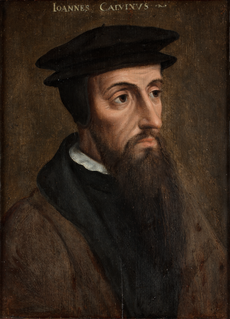 W
WJohn Calvin was a French theologian, pastor and reformer in Geneva during the Protestant Reformation. He was a principal figure in the development of the system of Christian theology later called Calvinism, aspects of which include the doctrines of predestination and of the absolute sovereignty of God in salvation of the human soul from death and eternal damnation, in which doctrines Calvin was influenced by and elaborated upon the Augustinian and other Christian traditions. Various Congregational, Reformed and Presbyterian churches, which look to Calvin as the chief expositor of their beliefs, have spread throughout the world.
 W
WAntoine de la Roche Chandieu was a French Reformed theologian, poet, diplomat and nobleman. His trend toward the Reformed Protestantism was strengthened during his study of law at Toulouse, and after a theological course at Geneva, he became the pastor of the Reformed congregation of Paris, 1556–62.
 W
WSaint Jane Frances de Chantal is a Catholic saint, who was beatified in 1751 and canonized in 1767. She founded the religious Order of the Visitation of Holy Mary. The order accepted women who were rejected by other orders because of poor health or age. When people criticized her, Chantal famously said, "What do you want me to do? I like sick people myself; I'm on their side." During its first eight years, the new order also was unusual in its public outreach, in contrast to most female religious who remained cloistered and adopted strict ascetic practices.
 W
WClaude Catherine de Clermont-Tonnerre de Vivonne, lady of Dampierre, countess and duchess of Retz, was a French courtier, writer and salon host.
 W
WMarie De Cotteblanche was a French noblewoman known for her skill in languages and translation of works from Spanish to French.
 W
WJeanne d'Albret, also known as Jeanne III, was the queen regnant of Navarre from 1555 to 1572. She married Antoine de Bourbon, Duke of Vendôme, becoming the Duchess of Vendôme and was the mother of Henri de Bourbon, who became King Henry III of Navarre and IV of France, the first Bourbon king of France.
 W
WLambert Daneau was a French jurist and Calvinist theologian.
 W
WGuillaume Desautels (1529-1599) was a French poet of the sixteenth century associated with La Pléiade.
 W
WPhilippe Desportes or Desports was a French poet.
 W
WAntoine du Verdier, lord of Vauprivast, was a French politician and writer.
 W
WCharles Estienne, known as Carolus Stephanus in Latin and Charles Stephens in English, was an early exponent of the science of anatomy in France. Charles was a younger brother of Robert Estienne I, the famous printer, and son to Henri, who Latinized the family name as Stephanus. He married Geneviève de Berly.
 W
WAuger Ferrier (1513–1588) was a French physician, known also as an astrologer, poet, and interpreter of dreams.
 W
WPierre Grégoire (c.1540–1597) was a French jurist and philosopher
 W
WFrançois Hotman was a French Protestant lawyer and writer, associated with the legal humanists and with the monarchomaques, who struggled against absolute monarchy. His first name is often written 'Francis' in English. His surname is Latinized by himself as Hotomanus, by others as Hotomannus and Hottomannus. He has been called "one of the first modern revolutionaries".
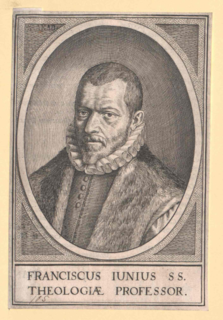 W
WFranciscus Junius the Elder was a Reformed scholar, Protestant reformer and theologian. Born in Bourges in central France, he initially studied law, but later decided to study theology in Geneva under John Calvin and Theodore Beza. He became a minister in Antwerp, but was forced to flee to Heidelberg in 1567. He wrote a translation of the Bible into Latin with Emmanuel Tremellius, and his Treatise on True Theology was an often used text in Reformed scholasticism.
 W
WPierre de L'Estoile was a French diarist and collector.
 W
WFrançois de la Noue, called Bras-de-Fer, was one of the Huguenot captains of the 16th century. He was born near Nantes in 1531, of an ancient Breton family.
 W
WDuke Pierre de la Place was a French Huguenot martyr, who died a few days after the 1572 St. Bartholomew's Day Massacre of the Huguenots. According to Foxe, he was informed of the massacre, and ordered to report to the King, to await the King's pleasure. He fled, but was unable to find shelter with any Catholics, and eventually returned to his house and fortified himself in, leading his wife and servants in prayer while he waited. He was eventually obliged to leave with the King's men, who led him into the clutches of assassins who killed him. His corpse was placed in a stable, where it was desecrated with horse dung, and his house was plundered.
 W
WPierre de La Primaudaye (1546–1619) was a French writer. He is known particularly for L'Academie Française, which was influential in English translations, from 1584 onwards, particularly The French Academie of 1618.
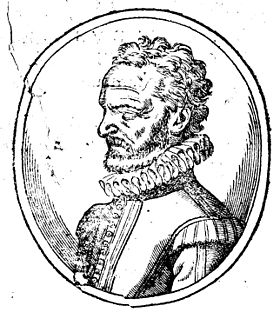 W
WBartholomew Laffemas was an economist, born in Beausemblant, France in 1545. He is officially recorded as dying in Paris in 1612. However, it is rumoured that he actually died on September 23, 1611, after falling from his horse. He is known as the first person to write about underconsumption
 W
WBlaise de Lasseran-Massencôme, seigneur de Montluc was a marshal of France.
 W
WMargaret of Valois was a French princess of the Valois dynasty who became queen consort of Navarre and later also of France. By her marriage to Henry III of Navarre, she was queen of Navarre and then France at her husband's 1589 accession to the latter throne.
 W
WJean Papire Masson Latin: Papirius was a French humanist historian, known also as a geographer, biographer, literary critic and jurist.
 W
WMichel Eyquem de Montaigne, also known as Lord of Montaigne, was one of the most significant philosophers of the French Renaissance, known for popularizing the essay as a literary genre. His work is noted for its merging of casual anecdotes and autobiography with intellectual insight. His massive volume Essais contains some of the most influential essays ever written.
 W
WMichel de Nostredame, usually Latinised as Nostradamus, was a French astrologer, physician and reputed seer, who is best known for his book Les Prophéties, a collection of 942 poetic quatrains allegedly predicting future events. The book was first published in 1555.
 W
WAmbroise Paré was a French barber surgeon who served in that role for kings Henry II, Francis II, Charles IX and Henry III. He is considered one of the fathers of surgery and modern forensic pathology and a pioneer in surgical techniques and battlefield medicine, especially in the treatment of wounds. He was also an anatomist and invented several surgical instruments. He was also part of the Parisian Barber Surgeon guild.
 W
WJacques Pelletier du Mans, also spelled Peletier was a humanist, poet and mathematician of the French Renaissance.
 W
WFrançois Pithou was a French lawyer and author.
 W
WPierre Pithou was a French lawyer and scholar. He is also known as Petrus Pithoeus.
 W
WJean Quintin or Quentin was a French priest, knight of the Order of St John and writer. His writings include Insulae Melitae Descriptio (1536), the earliest known detailed description of the Maltese Islands, which also contains the earliest known printed map of the archipelago.
 W
WFrançois Rabelais was a French Renaissance writer, physician, Renaissance humanist, monk and Greek scholar. He has historically been regarded as a writer of satire, the grotesque, bawdy jokes, and songs.
 W
WPetrus Ramus was an influential French humanist, logician, and educational reformer. A Protestant convert, he was one of the most prominent victims of the St. Bartholomew's Day massacre.
 W
WJean Ruel, also known as Jean Ruelle or Ioannes Ruellius in its Latinised form, was a French physician and botanist noted for the 1536 publication in Paris of De Natura Stirpium, a Renaissance treatise on botany.
 W
WCharles de Sainte-Marthe (1512–1555) was a French Protestant and theologian.
 W
WFrancis de Sales was a Bishop of Geneva and is honored as a saint in the Catholic Church. He became noted for his deep faith and his gentle approach to the religious divisions in his land resulting from the Protestant Reformation. He is known also for his writings on the topic of spiritual direction and spiritual formation, particularly the Introduction to the Devout Life and the Treatise on the Love of God.
 W
WJoseph Justus Scaliger was a French religious leader and scholar, known for expanding the notion of classical history from Greek and ancient Roman history to include Persian, Babylonian, Jewish and ancient Egyptian history. He spent the last sixteen years of his life in the Netherlands.
 W
WOmer Talon was a French humanist, a close ally of Petrus Ramus. Biographical details are few; and there are some quite serious bibliographical difficulties in distinguishing Talon and Ramus as authors.
 W
WDaniel Tossanus (1541–1602) was a French Reformed theologian.
 W
WNicolas Vauquelin des Yveteaux (1567–1649) was a French libertine poet, the son of Jean Vauquelin de la Fresnaye.